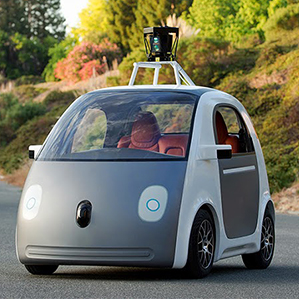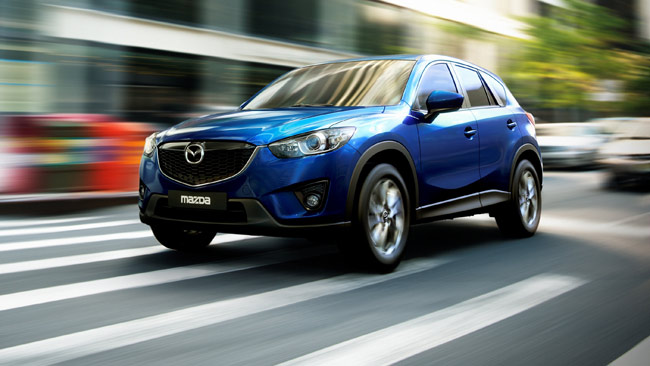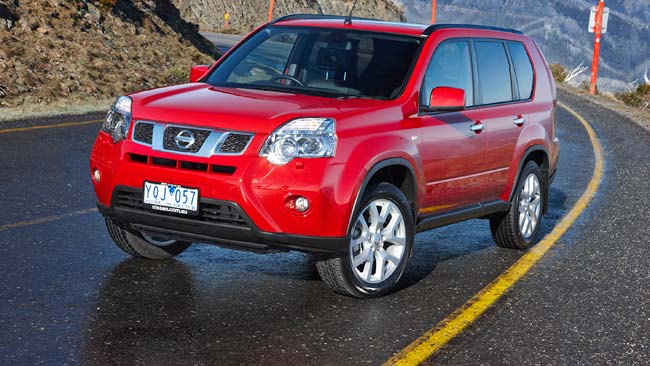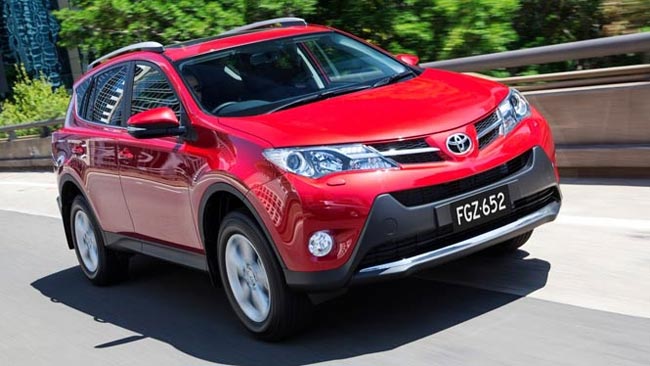Google: People Trusted Our Self-Driving <b>Cars</b> Too Much | MIT <b>...</b> |
| Google: People Trusted Our Self-Driving <b>Cars</b> Too Much | MIT <b>...</b> Posted: 30 May 2014 11:50 AM PDT Google came up with a new approach to its self-driving car project because humans trusted its previous prototypes too much.  Driver optional: Google's new car design lacks a steering wheel and other conventional controls. The fact that Google's bubble-like self-driving car, unveiled this week, lacks a steering wheel might be seen as evidence the company's software is close to mastering the challenges of piloting a vehicle. But the car's design is just as much a consequence of what Google's existing fleet of automated Lexus SUVs revealed about human laziness. Google's engineers had been focused on perfecting how well those modified cars could handle freeway driving, and they imagined their technology hitting the market in a way that left humans sharing driving duties with their vehicle. "The idea was that the human drives onto the freeway, engages the system, [and] it takes them on the bulk of the trip—the boring part—and then they reëngage," said Nathaniel Fairfield, a technical lead on the project, speaking at the Embedded Vision Summit in Santa Clara, California, on Thursday. That approach had to be scrapped after tests showed that human drivers weren't trustworthy enough to be co-pilots to Google's software. When people began riding in one of the vehicles, they paid close attention to what the car was doing and to activity on the road around them, which meant the hand-off between person and machine was smooth. But that interest faded to indifference over weeks and months as people became too trusting of the car's abilities. "Humans are lazy," says Fairfield. "People go from plausible suspicion to way overconfidence." That convinced Google it had to give up on switching between human and machine control, says Fairfield. That also ruled out building on top of conventional car designs, because they assume a human is on hand and ready to take over in the event of an emergency. "If the car detects there's something wrong with the power steering, it cuts it out and trusts you," said Fairfield. "Same with [power-assisted] brakes—they go limp but you can still stop the vehicle." Google's tests suggest that anyone accustomed to a self-driving car would be unlikely to be ready take over in the event of such a failure. And so Google's new vehicle design takes a leaf out of NASA's design book to cope with such eventualities. "It doesn't have a fallback to human—it has redundant systems," said Fairfield. "It has two steering motors, and we have various ways we can bring it to a stop." The car is powered by an electric motor roughly equivalent to that used in the Fiat 500e and has a range of around 100 miles. Its maximum speed is 25 miles per hour to reduce the severity of injuries to pedestrians in the event of a crash, says Fairfield. The front of the vehicle is made of plastic material intended to cushion any impact with a human. Google says it intends to build up a fleet of 100 of the vehicles for testing this summer. However, existing laws mean that only versions that have had conventional controls installed can be tested on public roads. Fairfield says that the decision to make a purely autonomous vehicle also had the benefit of bringing Google more in line with the company's original vision of something that could "drive everywhere for everybody." That more strongly differentiates Google's approach to automated vehicles from those of conventional automakers, who have pledged to keep humans in ultimate control of their vehicles (see "Driverless Cars Are Further Away Than You Think"). However, Google's new focus sets it on a more difficult path to getting its technology into commercial production. The company previously decided to focus on freeway driving because it is a relatively manageable task for software to take on. The new vehicle will have to cope with the much more challenging conditions on urban roads. |
| 2014 Hyundai ix35 update review: <b>Car Reviews</b>- CarsGuide Posted: 28 Nov 2013 04:01 PM PST The smart South Korean car makers look to Europe for inspiration on all aspects of car design and handling, and the newly revised Hyundai ix35 is an excellent example of the advantages of doing so. Times are still tough in the European car industry and the research and development money for new models is tight. So it makes sense to put the money into the important areas of exhaust emission reductions and increasing driving pleasure, rather than in making major appearance changes in a big facelift. The Europeans are just like the Aussies in wanting a responsive car. Or a responsive SUV, because the great majority of SUVs aren't bought to cross deserts and tackle wild bush tracks, instead they are cars. They appeal because of their ability to carry loads and provide a high driving position. They also make for easier entry and exit to the cabin for those who aren't as young as they used to be. PRICE / VALUE The range kicks off with the Active GDI 2.0-litre petrol 2WD five-door wagon at $26,990 for the manual version and $29,190 for the auto. It's followed by the Elite GDI 2.0-litre petrol 2WD five-door wagon $33,090 (automatic); Elite GDI 2.4-litre petrol AWD five-door wagon: $35,490 (automatic); Highlander GDI 2.4-litre petrol AWD five-door wagon: $38,090 (automatic); Elite CRDi 2.0-litre turbo-diesel AWD five-door wagon: $38,090 (automatic) and the Highlander CRDi 2.0-litre turbo-diesel AWD five-door wagon: $40,490 (automatic). Hyundai pioneered five-year unlimited distance warranty in Australia and naturally it continues in the updated ix35. There's complimentary Roadside Assist for 12 months on new vehicles and a 1500km complimentary first service. Hyundai's Australian Customer Care Centre is on call 24/7 and there's an owner website, magazine and special customer events. Like all local market Hyundai vehicles sold in Australia, the new ix35 Series II has Capped Price Service for the first three years. This varies in price from model to model. ENGINES / TRANSMISSIONS Hyundai ix35 Series II is now powered by direct-injection petrol engines. A 2.0-litre and 2.4-litre are offered, both give more performance then the units of the same size that they replace. At the same time fuel use and CO2 output have been lowered. The 2.0-litre GDI (Gasoline Direct Injection) delivers 122 kW and a handy 205Nm of torque. The torque is nicely spread and makes for easy driving. The 2.4-litre has 136 kW of power, top torque is 240 Nm and we found it impressive in real world driving as it makes for excellent overtaking ability. There are fewer changes in the 2.0-litre turbo-diesel engine that's available in the ix35 Elite and Highlander than there are in the petrol powerplants. It puts out up to 135 kW of power, with a strong 392 Nm of torque. STYLING As we said, the budget for the styling department wasn't huge. Nevertheless, the new ix35 Series II now has projector headlights and LED driving lights. The lights are slightly squarer in their shapes and have dark borders as a styling feature. There are new designs of alloy wheels. The midrange Hyundai ix35 Elite and the topline Highlander have roof rails that are claimed to improve aerodynamics. Inside the Hyundai SUV, there is new seat upholstery on the entry-level ix35 Active. The Elite and Highlander have new soft-touch front and rear upper door trims. Front drink holders have been reshaped and feature the sort of mood lighting normally only found on upmarket Euro cars. The 60/40-split rear seat now has a two-stage reclining function. INFOTAINMENT Hyundai ix35 Series II has standard Bluetooth telephone and audio streaming. The six-speaker audio system includes tweeters. Steering wheel audio controls, USB auto input with iPod compatibility and Aux input jack give you plenty of choices. Hyundai ix35 Series II has achieved the highest five-star ANCAP crash safety rating. All variants have six airbags. Crash prevention and/or minimisation units are, Anti-lock Braking System (ABS) with Electronic Brake-force Distribution (EBD), Electronic Stability Control (ESC), Traction Control System (TCS) and Vehicle Stability Management (VSM). Off-road safety features are, Downhill Brake Control (DBC), Hill Start Assist Control (HSAC). Parking beepers are fitted to all Hyundai ix35 models. The ix35 Elite and Highlander have a rear-view camera. DRIVING Suspension and steering changes are significant, with an optimised setup tuned to suit local Australian conditions. Considerably work was done here by Australian and Korean chassis engineers. Hyundai ix35 Series II's EPS (Electric Power Steering) system now uses 32-bit computer processing in place of the 16-bit system in the superseded ix35. This faster processor speeds up the response to the driver's steering input and also provides more feedback. The steering ratio has been reduced from 2.99 to 2.83 turns lock-to-lock, again to give faster response. In the interest of increased sophistication of ride and comfort the Hyundai ix35 has its sub-frame mounted by way of flexible bushes to replace the solid mounting of the outgoing model. There was certainly a nicely relaxed feel in the Hyundai ix35 models we tested on Queensland's Sunshine Coast during the introduction of the vehicle to the Australian media. On the downside, you don't get anything for nothing in this world and some may find the ride is firmer than they like on anything more than smooth surfaces.
RIVALS  Mazda CX-5 - see other verdictsPrice: from $27,880 Engine: 2.0L 4-cylinder, 114kW/200Nm Transmission: 6-speed manual, FWD or 4WD Thirst: 5.7-6.4l/100km, CO2 148-149g/km  Nissan X-Trail- see other verdictsPrice: from $28,490 Engine: 2.0L 4-cylinder, 102kW/198Nm Transmission: 6-speed manual, FWD or 4WD Thirst: 7.2-9.5l/100km, CO2 191-228g/km  Mitsubishi Outlander - see other verdictsPrice: from $28,990 Engine: 2.0L 4-cylinder, 110kW/190Nm Transmission: 5-speed manual, FWD or 4WD Thirst: 5.8-10l/100km, CO2 153-236g/km  Toyota RAV4 - see other verdictsPrice: from $28,490 Engine: 2.0L 4-cylinder, 107kW/187Nm Transmission: 6-speed manual, FWD or 4WD Thirst: 7.7L/100km |
| You are subscribed to email updates from car review - Google Blog Search To stop receiving these emails, you may unsubscribe now. | Email delivery powered by Google |
| Google Inc., 20 West Kinzie, Chicago IL USA 60610 | |

No comments:
Post a Comment